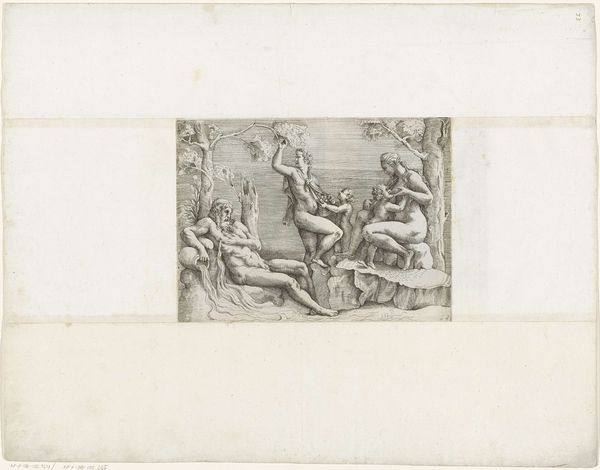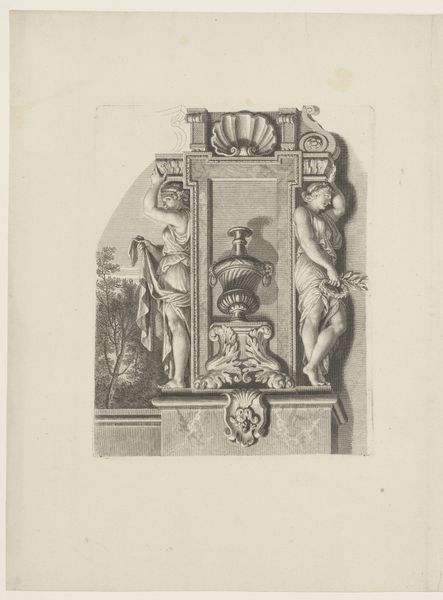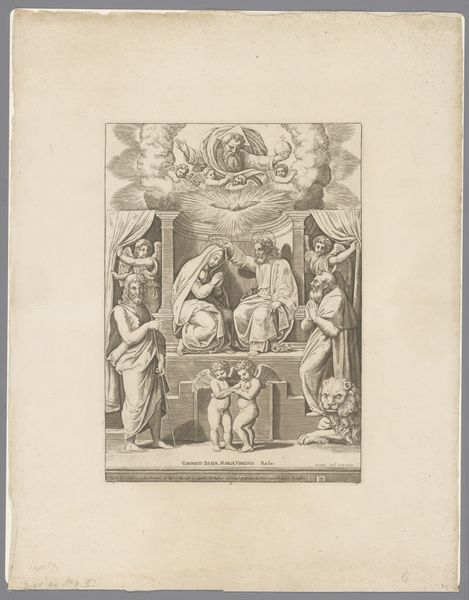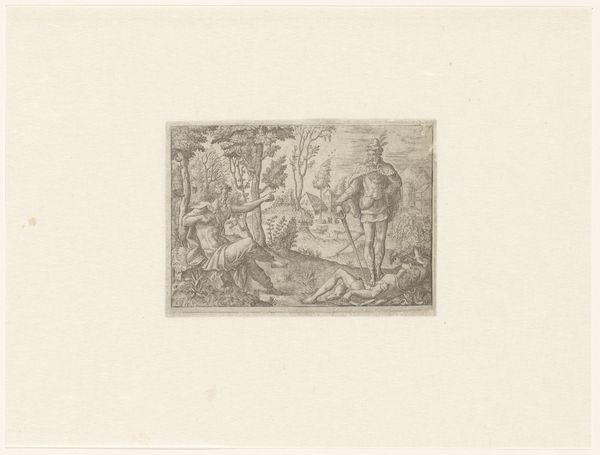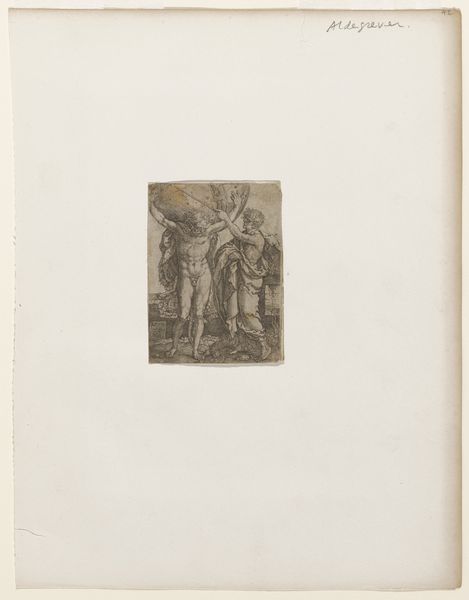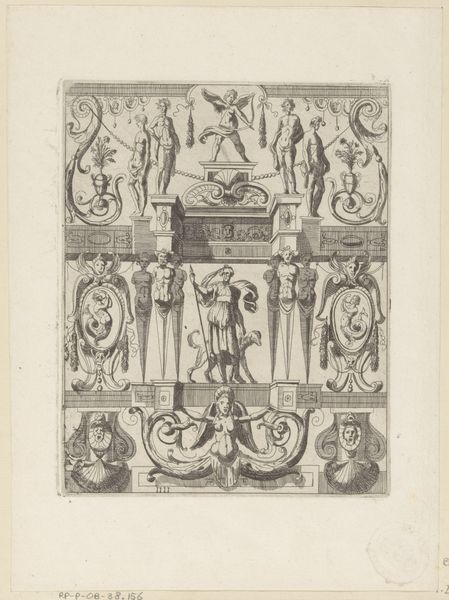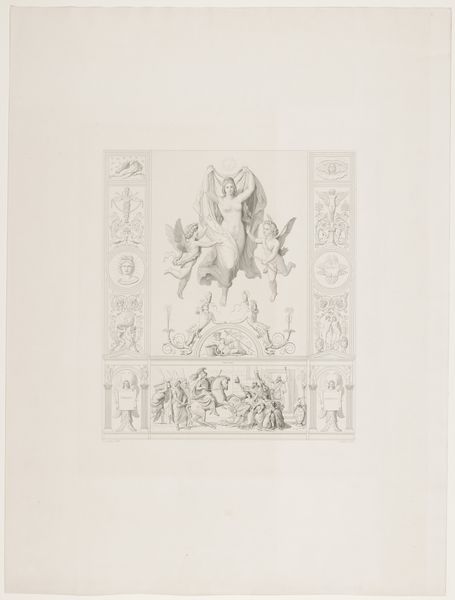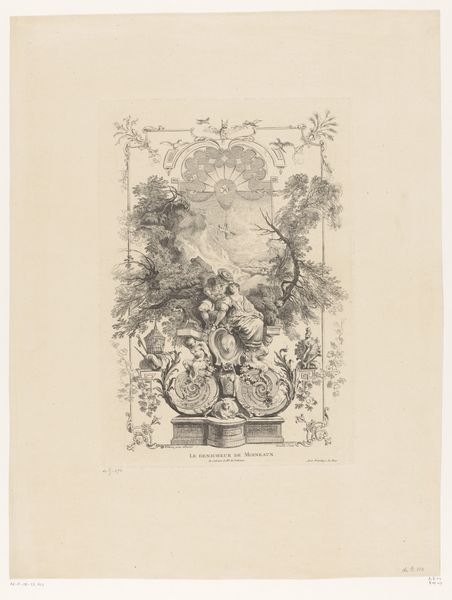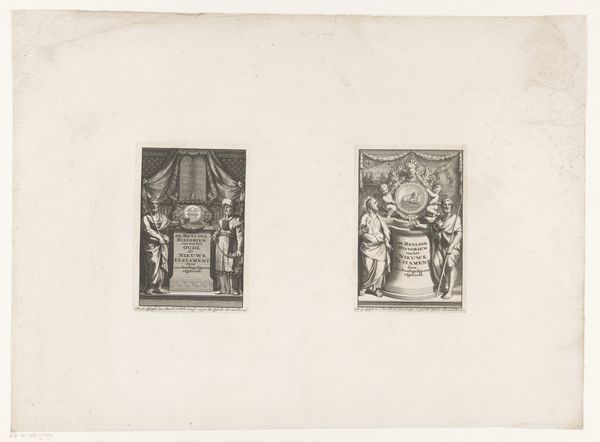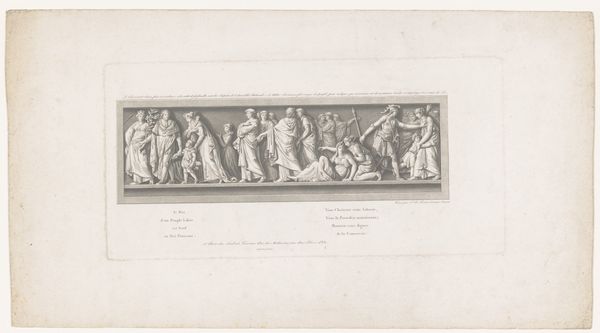
Fries met triomftocht van Quintus Fabius Maximus op schouw in Burgemeesterskamer van het Stadhuis op de Dam (eerste deel) 1663
0:00
0:00
hubertquellinus
Rijksmuseum
print, engraving
#
narrative-art
#
baroque
#
ink paper printed
# print
#
old engraving style
#
landscape
#
figuration
#
line
#
history-painting
#
engraving
Dimensions: height 190 mm, width 374 mm
Copyright: Rijks Museum: Open Domain
Curator: This engraving, created by Hubert Quellinus in 1663, depicts "Fries met triomftocht van Quintus Fabius Maximus op schouw in Burgemeesterskamer van het Stadhuis op de Dam (eerste deel)". It resides here in the Rijksmuseum. Editor: Immediately, the composition strikes me as highly structured, almost rigidly so. The stark linearity and the monochrome palette give it a formal, somewhat austere feel. Curator: Yes, note the stark lines created by the engraving technique. These lines create definition that direct the viewers' eyes across the entire work. Notice, for instance, the contrast between the textures; see how Quellinus renders fabric versus stone through the use of hatching and cross-hatching? Editor: Absolutely. And speaking of stone, observe the building in the background. That castle-like structure serves as a potent symbol of power and stability. It lends the narrative a certain grandeur. But my eye is drawn more to the figures at the front, especially those reclining and so…relaxed. What cultural underpinnings can we surmise from this contrast? Curator: Interesting observation. The juxtaposition indeed provokes a tension. Consider the triumphal procession, seemingly headed towards this very chamber, which, historically, symbolized victory and conquest. We have the suggestion of peace or apathy contrasted with victory or accomplishment. Note also the seemingly classical garb and idealized figures set against the backdrop of a very Northern European scene. Editor: I think what is powerful here is the way Quellinus uses these almost frozen allegorical forms to communicate complex civic and possibly moral ideas. These characters act as conduits for meanings much larger than themselves. Take the statue of the putti for example. The two children on a stand represent love or purity, acting as a possible omen to the events playing out in the triumphal march. It speaks to the symbolic density inherent in baroque art. Curator: Indeed. What first appeared as mere rigid structure unveils itself upon deeper analysis as a rich field of visual signs, layered meaning within meaning through its considered lines and deliberate composition. Editor: Precisely, by examining its very structure and form, it becomes possible to look into the symbolism and larger cultural connotations present.
Comments
No comments
Be the first to comment and join the conversation on the ultimate creative platform.

